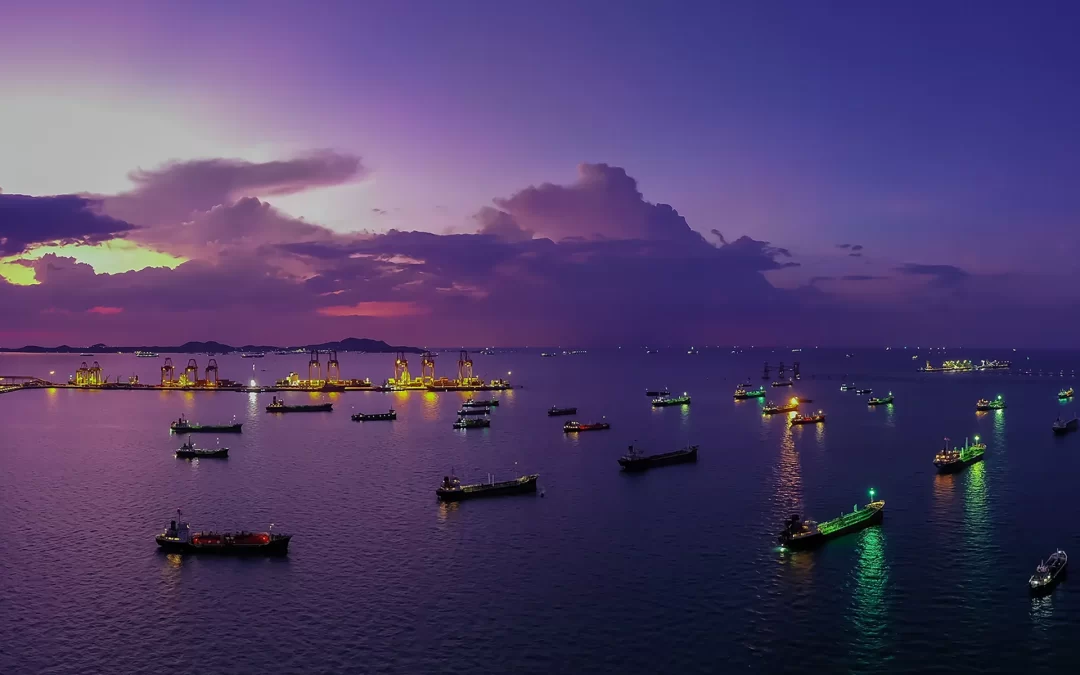The government unveiled a mega plan on Saturday to develop India into a shipbuilding hub, along the lines of Japan and Korea, as it eyes a larger participation of the private sector in infrastructure development through a string of public-private-partnership (PPP) projects that would be launched by various ministries in the coming months.
In her budget speech for 2025-26, finance minister Nirmala Sitharaman skipped any announcement on central capex support for infrastructure, which had been a regular feature in the past few budgets, but made clear her intentions to support this critical segment of the economy through numerous other initiatives.
What this means
These initiatives include the creation of a ₹25,000 crore Maritime Development Fund with 49% central support, launch of a modified UDAN airport development scheme to enhance regional connectivity to 120 new destinations and carry 4 crore passengers in the next 10 years, and a new Centre-state partnership programme to develop 50 tourist destination sites in the country with provision of infrastructure status to hotels at these locations.
As per budget papers, the central capital expenditure for FY26 has risen moderately to ₹11.21 trillion from the current year’s revised estimate of ₹10.18 trillion, but has remained flat as compared to ₹11.11 trillion budgeted earlier for FY25. The lower central capex follows reduced demand for capital from infrastructure sector ministries, including railways and roadways that account for almost 40% of cental capital allocation for infrastructure development.
The finance minister has made up for slower growth in capex by announcing that each infrastructure-related ministry will come up with a 3-year pipeline of projects that can be implemented in PPP mode. Private companies have been wary of investing, and the government aims to get them to invest through the PPP projects.
Sitharaman said that states will also be encouraged to do so (bring PPP projects) and can seek support from the IIPDF (India Infrastructure Project Development Fund) scheme to prepare PPP proposals. Besides, a higher quantum of fund of ₹1.5 trillion would be available to states in FY26 to take 50-year interest-free loans for capital expenditure and incentives for reforms.
“Infrastructure remains a key driver of economic growth, with ₹1.5 lakh crore in long-term interest-free loans to states and ₹25,000 crore for maritime expansion, strengthening India’s connectivity and trade competitiveness. The extension of the Jal Jeevan Mission, the ₹1 lakh crore Urban Challenge Fund, and affordable housing initiatives will enhance urban living standards. The Critical Minerals Development Policy, alongside customs duty exemptions on essential resources, ensures a secure supply chain for high-tech industries, supporting India’s ambitions in advanced manufacturing and clean energy. Green bonds and hydrogen R&D incentives further reinforce our commitment to a net-zero future,” said Amit Sharma, managing director and CEO, Tata Consulting Engineers.
Easy loans to reduce costs
The biggest announcement was, however, reserved for the shipping sector where Sitharaman said the existing Shipbuilding Financial Assistance (SBF) policy will be revamped to address cost disadvantages. This will also include Credit Notes for shipbreaking in Indian yards to promote the circular economy, she said.
“It is reassuring to see that the budgetary initiatives for India’s marine sector are focused on unlocking its vast potential and enhancing existing assets through upgrades, modernisation, and automation. A key highlight is our ministry’s development of new shipbuilding clusters of 1.0 to 1.2 million gross tonnage (GT) each. This strategic push is crucial in realising India’s vision of becoming a $30 trillion economy by 2047. By leveraging the PPP model, the scheme is designed to attract private investment, promote modernisation, and advance green technologies. These efforts will enhance India’s global competitiveness, drive sustainable growth, and solidify its position as a leading global maritime hub,” minister of shipping, ports and waterways Sarbananda Sonowal told Mint.
The government proposed infrastructure status for large ships to promote ship ownership and shipbuilding in India and place it among the top five countries in this space by 2047.
Sitharaman said ships above a specified size will be included in the harmonised master list (HML) for infrastructure. This means purchases of large ships will grant buyers the same benefits that shipbuilders currently receive. Infrastructure status will allow shipping entities to secure funds with easier financial terms, longer repayment periods, and lower rates from commercial banks. This will make it easier to buy ships from Indian shipyards and raise Indian ship ownership.
The finance minister said shipbuilding clusters will be facilitated to increase the range, categories and capacity of ships. This will include additional infrastructure facilities, skilling and technology to develop the entire ecosystem, she said.
Also, to support long-gestation shipbuilding industry and to develop a robust blue water economy, the budget proposed to continue the exemption of basic customs duty on raw materials, components, consumables or parts for the manufacture of ships for another 10 years. The same dispensation has also been extended for shipbreaking to make it more competitive. Also, the benefits of existing tonnage tax scheme, which was available only to sea-going ships, has been extended to inland vessels registered under the Indian Vessels Act, 2021 to promote inland water transport in the country.
To promote the development of domestic maintenance, repair, and overhaul units for aircraft and ships, last year’s budget had extended the time limit for export of foreign origin goods that were imported for repairs, from 6 months to one year, which are further extendable by one year. For FY26, the same dispensation has been extended for railway goods.
Sitharaman also announced that the government will set up an Urban Challenge Fund of ₹1 trillion to implement the proposals for ‘Cities as Growth Hubs’, ‘Creative Redevelopment of Cities’ and ‘Water and Sanitation’ announced in the July budget. This fund will finance up to 25% of the cost of bankable projects with a stipulation that at least 50% of the cost is funded from bonds, bank loans, and PPPs. An allocation of ₹10,000 crore is proposed for 2025-26.
In addition to promoting long-term investment and financing of infrastructure projects, the budget has proposed that development financial institution NaBFID will set up a ‘Partial Credit Enhancement Facility’ for corporate bonds for infrastructure. Also, to promote funding from Sovereign Wealth Funds and Pension Funds to the infrastructure sector, the budget has proposed to extend the date of making an investment by five more years, to 31 March 2030.
Source: Livemint






